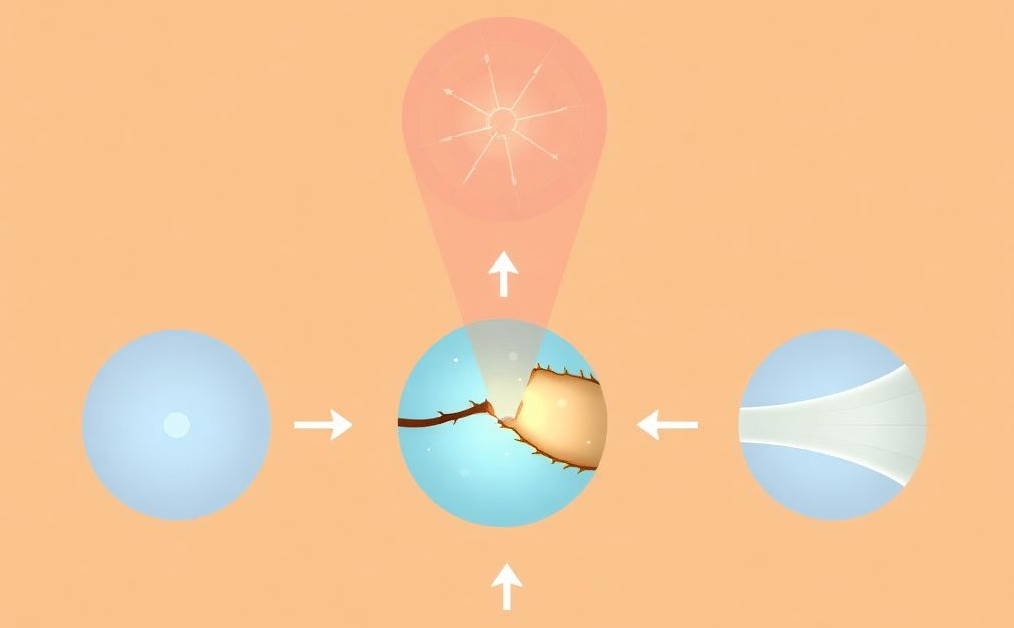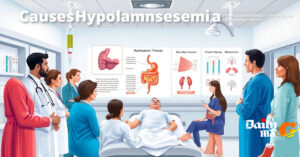Breaking a bone is common, whether from sports, accidents, or falls. When this happens, how the bone heals is crucial to regain strength and function. Knowing the five key stages of fracture healing helps doctors choose the best treatments and helps patients understand what to expect. By understanding each step, we can better support recovery and avoid complications. This article dives into each healing stage, explaining what happens, how long it lasts, and what influences its progress. In this article we can know 5 stages of fracture healing.
What Is Fracture Healing?
Fracture healing describes the natural process where broken bones repair themselves. It involves a series of biological steps that rebuild the bone’s structure. These steps are highly organized but can vary in speed depending on age, health, and the type of break. Typically, adults take about 3 to 6 months for full recovery, but some fractures may take longer, especially if they are complex.
Stage 1: Hematoma Formation
Overview of the initial response after fracture
Right after a bone breaks, blood vessels in the area tear, causing blood to clot at the injury site. This clot, called a hematoma, acts as the body’s first response. It helps seal the wounded vessels and sets the stage for healing. Without this initial clot, healing would slow down or fail.
Key processes involved
- The blood clot stabilizes the fracture edges.
- Inflammatory cells move to the area, starting the healing process.
- The tissue begins to swell and turn into a soft mass filling the gap.
Timeframe and clinical considerations
This stage usually lasts for the first few days after injury. Proper immobilization with splints or casts helps maintain the hematoma and prevents moving the broken pieces apart. Without stabilization, healing may be delayed or incomplete.

Stage 2: Inflammatory Response and Cell Recruitment
Immunological response to injury
Once the clot forms, immune cells rush to clean the area. These cells clear out debris and fight off potential infections. This cleaning process is vital to prevent complications and prepare for tissue repair.
Cellular activity
- Inflammatory cells like macrophages and neutrophils arrive first.
- They attract mesenchymal stem cells, which can turn into bone cells.
- Fibroblasts are recruited to produce new tissue.
Significance for healing
This step sets the foundation for tissue regeneration. Proper inflammation is important; too little can slow healing, but too much can cause problems. Treatments that support a balanced immune response promote better healing outcomes.
Stage 3: Soft Callus Formation
Formation of cartilage and fibrous tissue
Within 2 to 3 weeks, the body begins transforming the clot into a more organized structure. Fibroblasts produce collagen, forming a soft, fibrous bridge connecting the broken bone ends. Simultaneously, some stem cells turn into cartilage, creating a soft callus.
Biological mechanisms
Stem cells differentiate into chondroblasts and fibroblasts, producing cartilage and fibrous tissue. This soft callus acts like a scaffold, holding the fracture in place.
Duration and clinical relevance
This stage is vital for stability. Proper stabilization with immobilization ensures a sturdy soft callus, leading to better healing. If this step is disrupted, healing may slow or result in deformity.

Stage 4: Hard Callus Formation
Mineralization of soft callus
The soft tissue gradually transforms into hard, mineralized bone. Woven bone replaces cartilage through a process called ossification. This hard callus provides much stronger support to the fracture site.
Key factors influencing hard callus development
- Mechanical stability improves bone formation.
- Good blood flow supplies necessary nutrients.
- Proper nutrition, especially calcium and vitamin D, helps ossification.
Timeline and healing milestones
This phase usually occurs between 3 to 6 weeks after injury. It marks a crucial milestone, as the bone gains strength to bear weight or load. The hard callus is a precursor to full remodeling.
Stage 5: Bone Remodeling
Restoration of normal bone architecture
The woven bone is gradually replaced with stronger, more organized lamellar (plate-like) bone. This remodeling smooths out the surface and restores the bone’s natural shape and strength.
Factors affecting remodeling
- Mechanical stress encourages the correct shape.
- Age and health can slow this process.
- Ongoing activity and rehab help regain full function.
Clinical implications
Complete healing can stretch over months or years, especially in older adults. Signs of full recovery include no pain, full motion, and strength equal to the uninjured side.
Influencing Factors on Fracture Healing
Numerous elements can speed up or slow down healing. These include:
- Age: younger people heal faster.
- Nutrition: vitamins and minerals are essential.
- Health conditions: diabetes or osteoporosis can impair healing.
- Lifestyle choices: smoking delays bone repair.
- Medications: steroids may interfere with healing.
- Advances like bone grafts, growth factors, and bioengineering are improving recovery times.
Conclusion
Knowing the five stages of fracture healing helps us understand what’s happening inside the body after a break. From the initial blood clot to the final remodeling of bone, each phase has unique features and needs. Proper treatment, immobilization, and good nutrition significantly improve the chances of a smooth recovery. With ongoing research, future treatments will support faster and better healing, helping patients return to their normal lives sooner.
Key Takeaways
- Recognizing each stage aids in better treatment planning.
- Immobilization and diet are key to fast healing.
- Monitoring progress and addressing factors that slow healing can prevent complications.



81 Comments
NwwCzGF JXrsKDT vlgMb
Ремонт бампера автомобиля — это востребованная услуга, которая позволяет обновить первоначальный вид транспортного средства после небольших повреждений. Новейшие технологии позволяют исправить царапины, трещины и вмятины без полной замены детали. При выборе между ремонтом или заменой бампера https://telegra.ph/Remont-ili-zamena-bampera-05-22 важно учитывать масштаб повреждений и экономическую рентабельность. Профессиональное восстановление включает выравнивание, грунтовку и покраску.
Смена бампера требуется при критических повреждениях, когда ремонт бамперов невыгоден или невозможен. Стоимость восстановления определяется от материала изделия, степени повреждений и модели автомобиля. Пластиковые элементы допускают ремонту лучше стальных, а новые композитные материалы требуют специального оборудования. Грамотный ремонт продлевает срок службы детали и сохраняет заводскую геометрию кузова.
Рад быть полезным в любое время и при любых условиях по вопросам Ремонт бампера киа спектра цена – обращайтесь в Телеграм vxe72
Appreciate you sharing this. It’s been very helpful. Hope you’ll continue! Check my article: https://crimtour.com/vazhlyvi-posylannya/ !
l81316
zsdzqs
dapat informasi yang menarik Bersama brand terbaru perkenalkan dari Neko77, anda bisa jackpot berkali kali dengan bisa meraih berbagai cara yang unik.
memek tembem merah video hot terkini xnxx YUK CROT di dalam.
Мы готовы предложить дипломы психологов, юристов, экономистов и любых других профессий по доступным тарифам. Мы предлагаем документы техникумов, которые находятся в любом регионе РФ. Дипломы и аттестаты выпускаются на “правильной” бумаге самого высшего качества. Это позволяет делать государственные дипломы, не отличимые от оригинала. orikdok-2v-gorode-samara-63.online
I truly appreciate you sharing this. It’s been very useful. Hope to see more soon.. Check my website: https://b1top0010.xyz/ !
Unlock exclusive rewards with the valid 1Win Promo Code! Whether you’re a first-time player or a returning user, this code gives you a huge boost on your first deposit. Simply use the promo code during sign-up and enjoy additional credits instantly. Don’t miss your moment to maximize your winnings with this hot deal. The 1Win Promo Code is your ticket to better odds and more fun. Start playing today and feel the excitement of 1Win!
http://www.waltbabylove.com/upload/image/inc/?1win_promo_code_bonus_up_to_500.html 1Win Code Bonus
живые подписчики в телеграм живые подписчики в телеграм
8oa22o
6m55zf
Посетите страницу Валентины Паевской – https://paevskaya.ru/ – это известный детский практикующий нейропсихолог, перинатальный психолог, клинический психолог, с практикой более 19 лет. Индивидуальная работа с детьми раннего возраста. Вы сможете получить различные услуги от профессионала! Ознакомьтесь со всеми услугами и их стоимостью на сайте.
Стартуйте с бонусом — активируйте бонусный код на МостБет. Это простой способ увеличить депозит. Пройдите регистрацию, укажите код и заберите фрибет. Новичок имеет право на бонус. https://school33-perm.ru/media/pgs/?promokodu_na_segodnya_mostbet_pri_registracii_bonus_do_25_000_rub.html МостБет промокод 2025
main dunia dewasa porno play you see.
tdgd1v
Thanks for the article https://l-spb.ru/
2aibge
JjlzClo CsMugP MoQ ruay acPCNw eDm bvfEA
Appreciate it for helping out, good info .
купить программу 1с для ип купить программу 1с для ип .
Very insightful and well-written. I learned a lot from this! Pls check my website: https://emopat.xyz/ !
My brother recommended I might like this web site He was totally right This post actually made my day You cannt imagine just how much time I had spent for this information Thanks
9fc9dq
Can you be more specific about the content of your article? After reading it, I still have some doubts. Hope you can help me.
l-spb.ru .
dlhyl9
Selimpaşa su kaçak tespiti Ataşehir’de su kaçağı tespiti için çağırdık. Yaptıkları işten çok memnun kaldım. https://onsetinfotech.com/author/kacak/
İstanbul da su kaçağı tespiti yapan firmalar Komşulara da Tavsiye Ettik: Hizmetlerinden o kadar memnun kaldık ki çevremize de tavsiye ettik. https://adler-terme.net/author/kacak/
Thanks for sharing. I read many of your blog posts, cool, your blog is very good.
Fenerbahçe su kaçağı tespiti İşlerini büyük bir titizlikle yapan bu ekip, güven verdi. https://worldwomannews.com/author/kacak/
pin up tennis tikish pinup3007.ru .
Мы можем предложить документы институтов, которые находятся на территории всей Российской Федерации. Купить диплом о высшем образовании:
drovokol.ru/forum/user/14563
Cat Casino
сайт Cat Casino
Cumhuriyet su kaçak tespiti Kaçağı bulurken evi dağıtmadılar, bu çok önemliydi. https://x.com/Ustaelektrikci
porno hd latin
Доставка алкоголя с акциями и скидками — удобно и выгодно
доставка алкоголя круглосуточно москва доставка алкоголя в бутово .
Заказать документ о получении высшего образования можно в нашем сервисе. Купить диплом института по выгодной цене возможно, обратившись к надежной специализированной компании. nagaevo.ekafe.ru/viewtopic.phpf=86&t=5354
Bitzamo
казино Bitzamo
лучший интернет провайдер казань
inernetvkvartiru-kazan001.ru
недорогой интернет казань
Електричні обігрівачі — практичне рішення для домашнього тепла. Вони підключаються до розетки, а також споживають мало енергії. Інноваційні варіанти обладнані термостатами, що забезпечує зручність. Створіть комфорт з електрорадіаторами нового покоління. https://forum.munkonggadget.com/detail.php?id=288563 Электро батарея
tıkanıklık ve su kaçak tespiti Bahçedeki su kaçağını yer altı dinleme cihazlarıyla buldular. Peyzaja minimum zarar verdiler. İsmail N. http://goodliving123.com/author/kacak/
primer-10
конференц-зале конференц-зале .
интернет по адресу дома
inernetvkvartiru-krasnoyarsk003.ru
провайдеры по адресу
оборудование конференц залов оборудование конференц залов .
бк мост бет бк мост бет
Гражданство по рождению, натурализации и инвестициям — сравниваем страны, сроки и требования https://vgrazhdanstve.ru/
конференц зал под ключ конференц зал под ключ .
zaezd-pod-klyuch-1122.ru .
Купить диплом ВУЗа!
Наша компания предлагаетвыгодно заказать диплом, который выполняется на бланке ГОЗНАКа и заверен печатями, водяными знаками, подписями должностных лиц. Наш документ пройдет лубую проверку, даже с применением специально предназначенного оборудования. Достигайте цели быстро и просто с нашими дипломами- newsbizlife.ru/kak-pravilno-oformit-pokupku-diploma
Посетите Strategium https://www.strategium.ru/ – это крупнейший игровой форум по стратегиям, экономике, крипте, играм, прохождениям, читам, модам, кодам, а также возможность скачать игры бесплатно. Ознакомьтесь на сайте с разделами, и вы обязательно найдете интересующую вас тему для обсуждения или просто почитать новости игр и игровой индустрии.
mental health chatbot mental-health6.com .
Rubbish Taxi https://rubbish-taxi.ie/ provides fast, reliable rubbish removal across Dublin, handling household junk, garden waste, old furniture, mattresses, appliances, construction debris, and more. Our licensed team offers same-day man-and-van service with all labour included. We also collect old sofas, armchairs, bed frames, carpets, doors, and bulky waste, making it easy to clear out unwanted items quickly and efficiently.
Получаемый диплом с приложением целиком и полностью отвечает требованиям и стандартам, неотличим от оригинала. goznak-diplome.online
Emergency Plumbers emergency plumbing…
Откройте новые возможности в нашем онлайн-магазине. Мы предоставляем разнообразные позиции для удовлетворения запросов по https://wiwonder.com/read-blog/14288_tolko-zdes-kraken-i-tovary-s-pechatyu-piratskoj-chesti.html
casa pariurilor aplicatie android http://www.1win14035.ru .
оборудование для актового зала школы http://www.oborudovanie-dlya-aktovogo-zala.ru/ .
Приобрести документ о получении высшего образования можно у нас. Приобрести диплом института по доступной цене возможно, обратившись к надежной специализированной фирме. lkhost.group/read-blog/4227_gde-mozhno-kupit-attestat-za-9-klass.html
mostbet.com http://www.mostbet33001.ru
ultimate createporn AI generator. Create hentai art, porn comics, and NSFW with the best AI porn maker online. Start generating AI porn now!
Hi, I think your website might be having browser compatibility issues. When I look at your blog in Chrome, it looks fine but when opening in Internet Explorer, it has some overlapping. I just wanted to give you a quick heads up! Other then that, great blog!
hafilat card
https://kra33.cc
Форум Lolz.live станет для вас настоящим кладезем впечатлений и познаний. Тут собралось много опытных участников. Темы обсуждений довольно разные: от основ соц. инженерии до трудных техник и советов. Предлагаем вам просто поболтать и от рутины отвлечься! https://lolz.live – здесь множество полезной информации, можно опытом поделиться и почитать что-либо. На сайте постоянно появляются новые материалы. Регистрация проходит довольно легко и быстро. Модераторы помогают уладить любые конфликты, они добрые. У нас каждый найдет что-то по душе!
Высокие подстолья для стоячих рабочих мест — комфорт и польза
купить подстолья для столов https://podstolia-msk.ru .
Быстро приобрести диплом любого университета. Заказ документа о высшем образовании через качественную и надежную компанию дарит ряд преимуществ. Данное решение помогает сэкономить как личное время, так и значительные финансовые средства. orikdok-v-gorode-yaroslavl-76.online
Бокалы для вина с тонкой ножкой — изысканный выбор для гурмана
бокал для вина https://www.bokaly-dlya-vina.neocities.org .
Küçükyalı su kaçağı tespiti Cihangir su kaçağı tespiti: Cihangir’deki su kaçaklarına noktasal çözüm sunuyoruz. https://communiti.pcen.org/read-blog/28282
Купить дженерики в Мурманске с доставкой https://gen51.ru/ высокое качество
по выгодной цене с доставкой по городу и области в день заказа.
Отправка дженериков в регионы почтой России
провайдеры интернета по адресу нижний новгород
inernetvkvartiru-nizhnij-novgorod002.ru
интернет домашний нижний новгород
звуковое оборудование для актового зала звуковое оборудование для актового зала .
lxseqg
Стильное подстолье как основа современного дизайнерского стола
подстолья для кафе купить podstolia-msk.ru .
Стеклянные бокалы для вина по выгодным ценам с доставкой
бокал для вина bokaly-dlya-vina.neocities.org .
?? У кого в дипломе хоть раз была правда?
Вот реально: вы когда-нибудь открывали свой диплом и думали — “да, всё, что здесь написано, я действительно знаю и умею”?
У многих — только сертификат. Корочка, глянцевая, с гербом и подписями, которую HR смотрит за 1,5 секунды. А потом начинается: опыт, кейсы, компетенции, “что умеешь по факту?”. Диплом где-то там, в мнимом мире.
Но парадокс в том, что без диплома тебе даже не дадут шанс доказать, что ты умеешь.
Ты можешь быть хорошим специалистом, уметь в IT, дизайн, управление, логистику — но без документа с золотым тиснением не попадешь на собеседование.
?? Нормально ли это? Нет. Реальность ли это? Да.
Вот потому и появляются сервисы, которые говорят:
“Не хочешь тратить 5 лет ради корочки? Мы поможем. Тебе нужен не вуз — тебе нужен диплом.”
Ты его получаешь, кладёшь в резюме, и дальше всё зависит от твоих мозгов, а не от шрифта на бумаге.
Кто-то скажет: “Это обман!”
А кто-то — “Это адаптация к системе, которая обманывает тебя с детства”.
?? И что в итоге?
Диплом становится не подтверждением знаний, а входным билетом. Как QR-код в метро — проверили, что есть, и пропустили.
Поэтому люди и покупают.
Не потому что глупые. А потому что взрослые, занятые, уставшие от лишнего.
Потому что хотят не учиться “ради процесса”, а работать по делу.
?? Ирония в том, что большинство таких дипломов — работают.
Даже если ты их не учил — ты знаешь, как применить. А вот “настоящие выпускники” потом всё равно идут на курсы и стажировки, потому что ничего не помнят.
И что важнее: корочка или то, как ты справляешься с задачей?
?? У кого были такие мысли — пишите. У кого был опыт — делитесь.
Кто заказывал диплом без предоплаты — насколько это реально? Обращайтесь
гардина с электроприводом гардина с электроприводом .
Velibaba su kaçak tespiti Tespit ve çözüm süreci çok hızlı ve sorunsuzdu. https://carolinahurricanesclub.com/read-blog/5577
Pingback: Comprehensive Guide to Spinal Deformity ICD-10 Coding
Реставрация бампера автомобиля — это популярная услуга, которая позволяет вернуть заводской вид транспортного средства после небольших повреждений. Новейшие технологии позволяют устранить сколы, трещины и вмятины без полной замены детали. При выборе между ремонтом или заменой бампера [url=https://telegra.ph/Remont-ili-zamena-bampera-05-22]https://telegra.ph/Remont-ili-zamena-bampera-05-22[/url] важно рассматривать масштаб повреждений и экономическую выгодность. Экспертное восстановление включает шпатлевку, грунтовку и покраску.
Установка нового бампера требуется при серьезных повреждениях, когда восстановление бамперов невыгоден или невозможен. Цена восстановления зависит от материала изделия, степени повреждений и типа автомобиля. Синтетические элементы подлежат ремонту лучше металлических, а новые композитные материалы требуют специального оборудования. Профессиональный ремонт продлевает срок службы детали и поддерживает заводскую геометрию кузова.
Мне было бы приятно предложить содействие по вопросам Ремонт переднего бампера шеви нива – обращайтесь в Телеграм qjf03